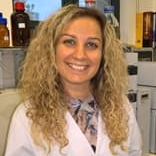Measurement of Antioxidant Activity: Advances and Perspectives
A special issue of Molecules (ISSN 1420-3049).
Deadline for manuscript submissions: closed (30 June 2021) | Viewed by 96674
Special Issue Editors
Interests: food chemistry; bio-based ingredients; antioxidants; extraction methods; process optimization
Special Issues, Collections and Topics in MDPI journals
Interests: natural bioactive compounds; medicinal chemistry; bioactivity and toxicology; functional applications
Special Issues, Collections and Topics in MDPI journals
Interests: bioactive compounds; food chemistry; phenolic compounds; chromatography; mass spectrometry
Special Issues, Collections and Topics in MDPI journals
Special Issue Information
Dear Colleagues,
Significant advances in recent years have brought major improvements in how to assess the antioxidant capacity of different samples, while serious questions about the chemistry, execution, and application of several assays have been raised among the scientific community.
Many analytical methods have been used for decades for antioxidant activity measurements with inadequate consideration of the reaction chemistry or kinetics and without addressing toxicity issues. Furthermore, the results obtained by chemical methods do not extrapolate the performance of the target sample in vivo, since the antioxidant action in biological systems occurs under complex physiological conditions. Additionally, does the term antioxidant equate to health benefits?
At this time, it is necessary to discontinue or improve some methodologies and to implement cellular and food model systems to accurately assess the biological or technological relevance of the antioxidant effect. The challenge is to standardize the analytical methods that have been developed and to demonstrate their robustness and flexibility and the actual meaning of the results at the in vivo level.
This Special Issue aims to bring together recent research and experience on measurement of antioxidant activity of synthetic and natural compounds and bio-based ingredients. We invite researchers to contribute original research and review articles on recent advances and applications in this field of antioxidant research that is receiving so much attention in the food, pharmaceutical, and biological sciences.
Dr. José Pinela
Prof. Dr. Lillian Barros
Dr. Maria Ines Dias
Guest Editors
Manuscript Submission Information
Manuscripts should be submitted online at www.mdpi.com by registering and logging in to this website. Once you are registered, click here to go to the submission form. Manuscripts can be submitted until the deadline. All submissions that pass pre-check are peer-reviewed. Accepted papers will be published continuously in the journal (as soon as accepted) and will be listed together on the special issue website. Research articles, review articles as well as short communications are invited. For planned papers, a title and short abstract (about 100 words) can be sent to the Editorial Office for announcement on this website.
Submitted manuscripts should not have been published previously, nor be under consideration for publication elsewhere (except conference proceedings papers). All manuscripts are thoroughly refereed through a single-blind peer-review process. A guide for authors and other relevant information for submission of manuscripts is available on the Instructions for Authors page. Molecules is an international peer-reviewed open access semimonthly journal published by MDPI.
Please visit the Instructions for Authors page before submitting a manuscript. The Article Processing Charge (APC) for publication in this open access journal is 2700 CHF (Swiss Francs). Submitted papers should be well formatted and use good English. Authors may use MDPI's English editing service prior to publication or during author revisions.
Keywords
- Antioxidant activity
- Cellular and food model systems
- Chemical versus cellular methods
- Chemistry and mechanisms of action
- Antioxidant response modelling
- Lipid peroxidation, prooxidants, and free radicals
- Bioaccessibility and cytotoxicity








